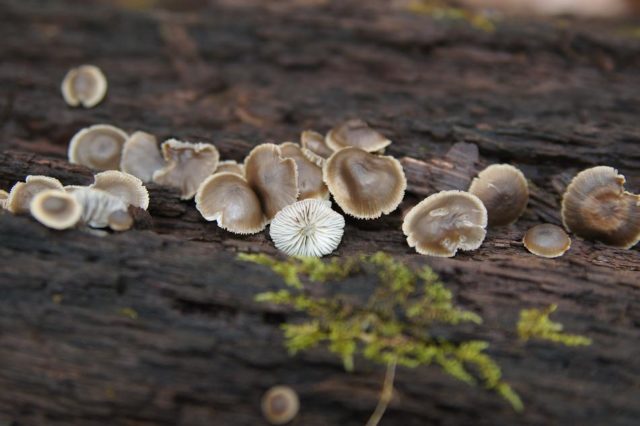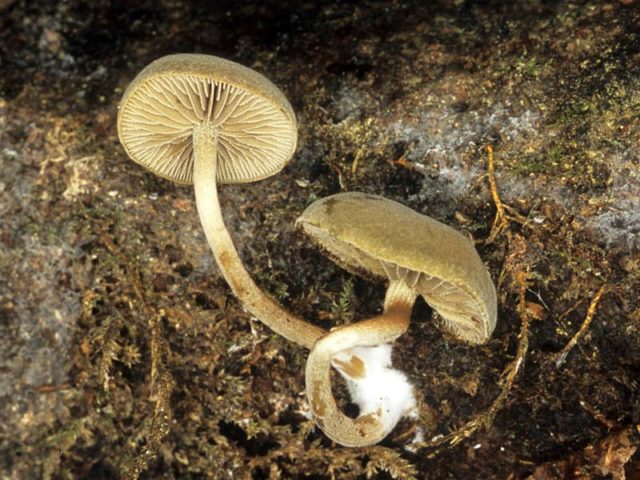Content
Patchwork simocybe (Simocybe centunculus) is a very common lamellar mushroom belonging to the Crepidota family. Like all members of the genus, it is a saprotroph. That is, you can find it on rotting tree trunks, stumps, as well as meadows where sedge grows.
What does simocybe patchwork look like?
This species was first found and described in Finland by the famous mycologist, professor of botany Peter Adolf Karsten back in 1879.
Patchwork simocybe is a small mushroom: the diameter of the cap is from 1 to 2.5 cm. Moreover, the shape of the convex hemisphere with the edges directed inward is characteristic only of young specimens. As it matures, it straightens and becomes flatter.
The color can, albeit slightly, but differ: in different representatives of the genus Simocybe, it ranges from greenish-brown to brownish and dirty gray. In the center of the cap of an adult mushroom, the colors lose intensity, thickening towards the edges.
This species is distinguished from other saprotrophs by small plates attached to the peduncle. They are white at the edges, and darker at the base. But this contrasting effect can only be observed in young specimens. With age, all scales acquire a single brownish tint.
The surface is smooth and dry, sometimes velvety. In young simocybe patchwork, slight pubescence can be seen. The leg of adult representatives of this species is curved and thin, no more than half a centimeter in thickness. But its length can reach 4 cm.
Where does the simocybe patchwork grow
The range of all arboreal saprotrophs (necrotrophs) coincides with those areas where there are forests and meadows with sedge. It grows and bears fruit on rotten tree trunks and stumps, as well as on old straw throughout the season.
Is it possible to eat a patchwork simocybe
This mushroom is inedible. There are those who consider it unambiguously poisonous and even hallucinogenic. True, there is no reliable confirmation of this fact so far. However, collecting and eating a patchwork simocybe is still not recommended.
It is not so easy even for an experienced mushroom picker to determine what kind of saprotroph got in his way. After all, only the genus Simocybe has about a hundred species - sometimes only microscopic studies allow them to be accurately distinguished. And the similarity of this representative can be traced to many others growing on decaying wood.
Such is, for example, psatirella (another name for a fragile woman). This, as well as the patchwork simocybe, is a small arboreal saprotroph with a curved stem.
In the old days, most of them were considered poisonous, but today it is known that these mushrooms can be eaten, however, only after prolonged heat treatment (boiling). Therefore, psatirella is classified as conditionally edible.
Conclusion
Patchwork simocybe is a common mushroom that lives where there is a favorable environment for it in the form of wood remains and old straw. Its role in living nature cannot be overestimated: like other saprotrophs, it contributes to the formation of humus, which is necessary for the growth of all higher plants.











